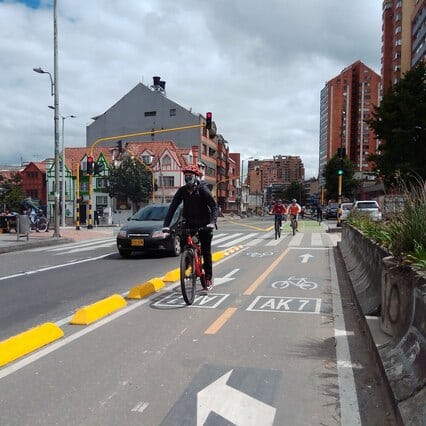Trainings & E-Learning
Mastering the Cycling City
Mastering the Cycling City is a self-guided course for city planners, practitioners, and advocates that provides context, guidance, and case studies to improve urban cycling.
The course is made up of three main modules, and a brief introductory module, which you are welcome to move through in any order. To reinforce what you’ve learned, activities, templates, and resource links can be found at the end of each module.
Teaching Format:
Digital
Starting Date:
Any Time
Language:
English
Module 0: “Envision it”: What Makes a Cycling City?
A Cycling City is one where everyone—parents with their children, young people, older adults, women, people with disabilities—feels safe to cycle anywhere. That means cycling infrastructure is connected and safe. But it also means that supportive policies, like low speed limits, and designated resources are in place to further mainstream cycling. In Cycling Cities, people choose to cycle because it is the most convenient option for most trips.
More Cycling Cities will decrease demand for and use of private vehicles along with all the negative impacts of driving like air pollution, greenhouse gas emissions, noise pollution, road injuries and deaths, low physical activity levels and related health impacts, and the physical division of communities. Cycling Cities will increase access for many who lack direct and safe connections to opportunities and services. More cycling yields cleaner air, quieter streets, active lifestyles, and closer connections to people and places.
Goal for MODULE 0: Understand what it means to be a Cycling City
Module 1: “Design it”: Infrastructure for Cycling Cities
A key element of a Cycling City is high-quality, safe infrastructure on the street that enables people of all ages and abilities to cycle comfortably. In this module, we explore what is needed to design, plan, pilot, and evaluate cycle infrastructure.
Goal for MODULE 1 : Understand what infrastructure is needed to create a cycle network, and how to implement and evaluate it.
Module 2: “Institutionalize it”: Policies that Prioritize Cycling
Policies and plans help to institutionalize a city’s values and align cycling with the broader sustainable transportation network.
Goal for MODULE 2 : Understand how to develop a cycling policy or plan that addresses barriers to cycling and sets goals to improve safety, access, and uptake of cycling.
Module 3: “Promote it”: Building Support Across Stakeholders
Campaigns and other awareness-building actions help different stakeholders understand and feel included in the process of cycle projects and plans. Building support from as many stakeholder groups as possible will pave the way for future projects, especially if communities, businesses, and civil society perceive a shift to cycling as beneficial to them.
Goal for MODULE 3: Understand how events, education, and awareness-building campaigns targeted to specific stakeholders are critical to building widespread support for cycle projects and a more diverse culture of cycling.

Organizer

